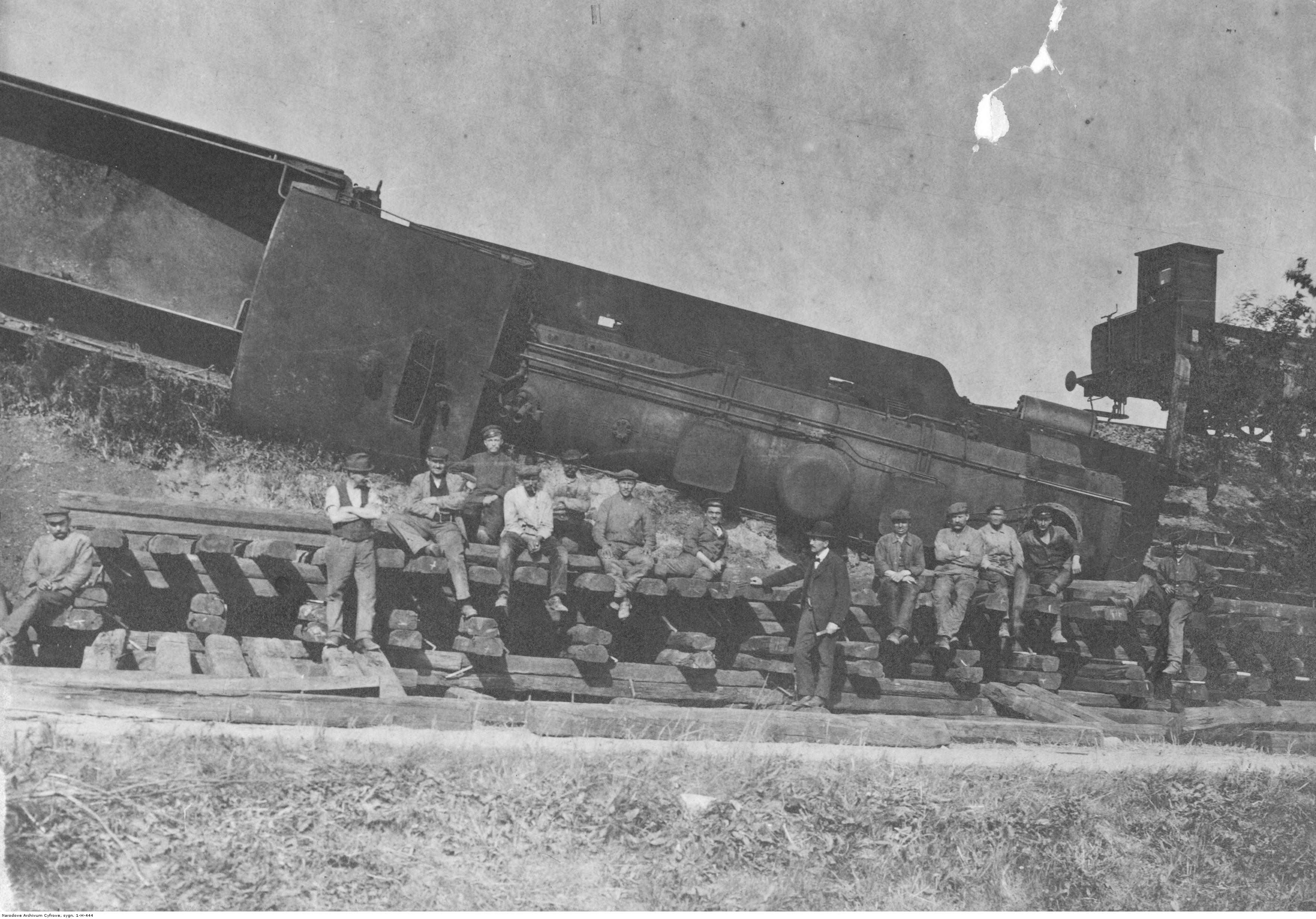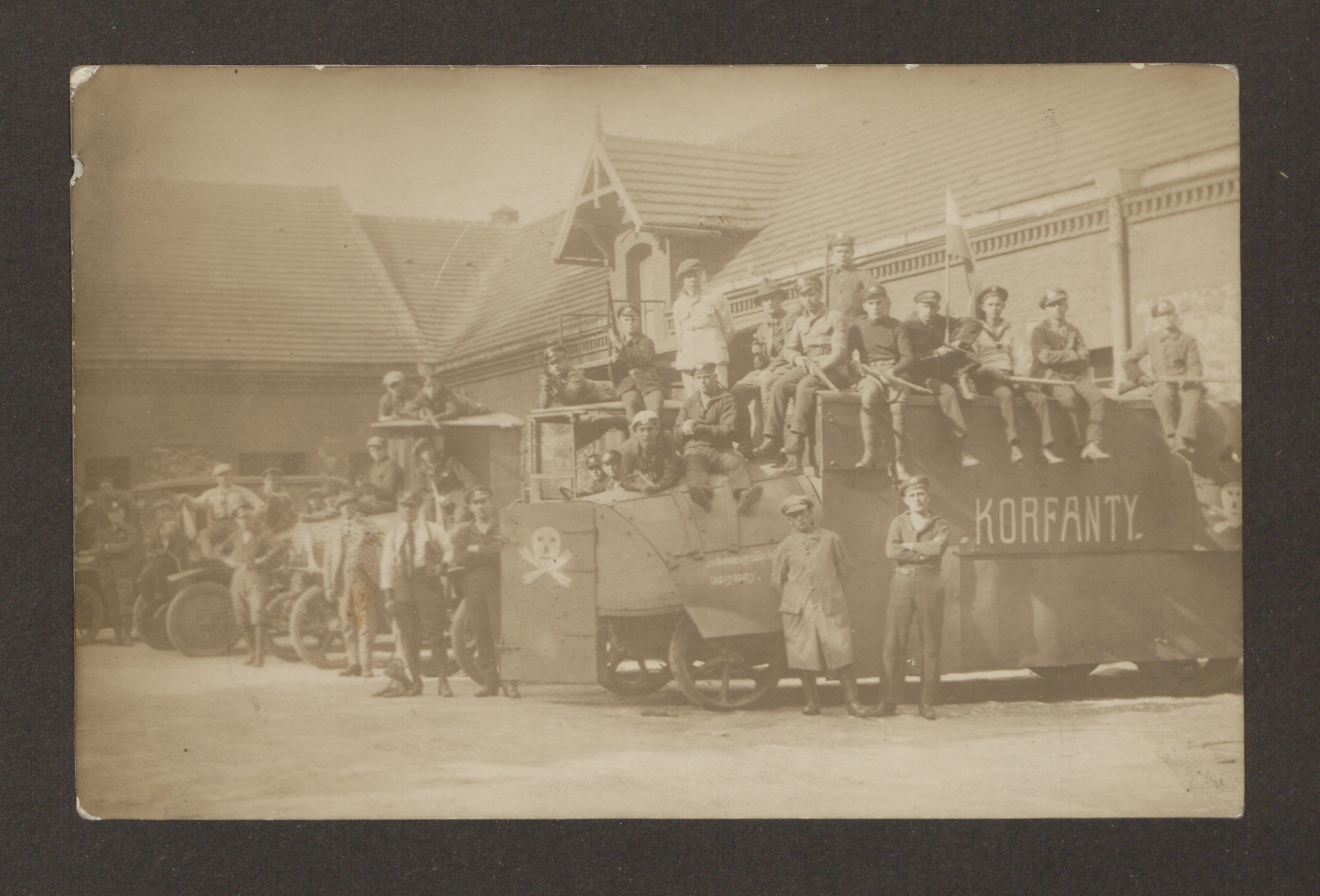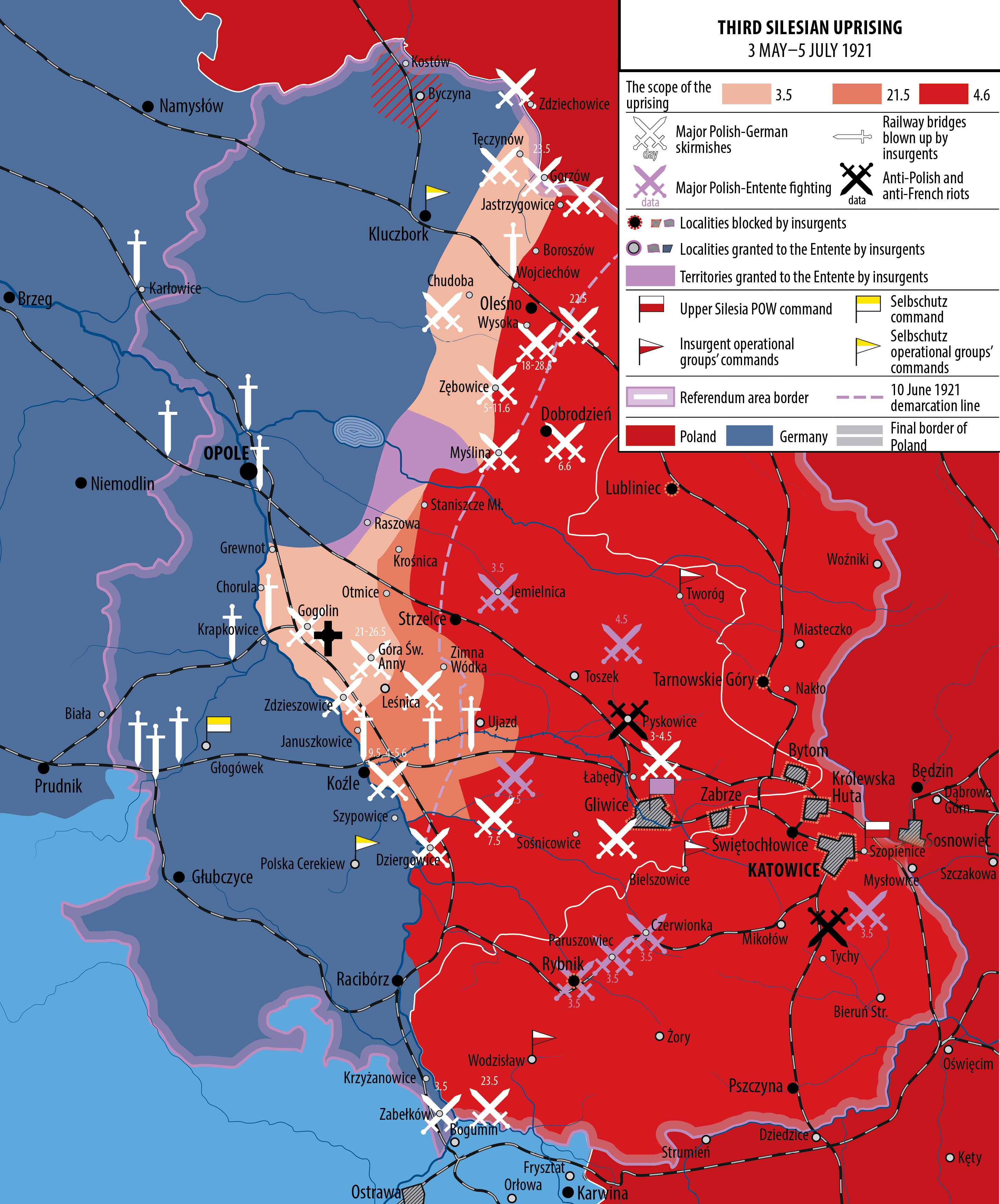Third Silesian Uprising
20 March 1921 saw a referendum in Silesia. 707,393 people voted for Germany, mainly urban dwellers, plus more than 180,000 people who came to Silesia exclusively to vote. 479,365 people (40.3 percent) voted for Poland. Due to Italy and Great Britain’s position Poland was to receive only scraps on the region’s border. As a result of that decision Poles started another uprising, with Korfanty proclaiming himself its dictator on the night of 2–3 May 1921. The Uprising’s objective was to take control of the territory where those who voted for Poland constituted the majority. On 5 July 1921, with the powers’ decision, Germany was forced to sign an armistice. The decision to divide the region was reached on 12 October 1921. Poland received approx. 1/3 of the referendum area, where most ironworks, zinc works, and mines were located. Poland took official control over the territory it received on 20 June 1922. Merged with a part of Cieszyn Silesia, those lands constituted the autonomous Silesian province with its own Sejm, treasury, police, and school system. Though the smallest in terms of the territory, it was the most populous and the richest province in the Second Republic of Poland.


